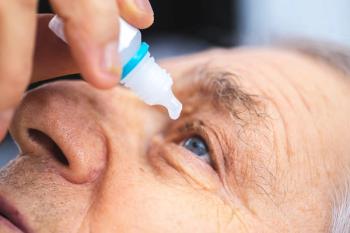
Envision Summit 2025: Keratoconus management and using scleral lenses
At the Envision Summit 2025 in San Juan, Puerto Rico, Ashley Wallace Tucker, OD, FAAO, FSLS, gave insight into advancements in keratoconus management and the importance of early detection as well as tips and advice on fitting scleral contact lens
At the Envision Summit 2025 in San Juan, Puerto Rico, Ashley Wallace Tucker, OD, FAAO, FSLS, gave insight into advancements in keratoconus management and the importance of early detection as well as tips and advice on fitting scleral contact lens
Video Transcript:
Editor's note: The below transcript has been lightly edited for clarity.
Ashley Wallace Tucker, OD, FAAO, FSLS:
My name is Dr. Ashley Wallace Tucker. I am an optometrist. I have a private practice in Houston, Texas named Bellaire Family Eye Care. I'm also an adjunct faculty at the University of Houston, College of Optometry. I'm super honored to be here at Envision. So earlier today, I was on a panel discussing some cases that were kind of not what you thought. So the case that I discussed was a case of RCE, or recurrent corneal erosion. This patient was suffering with the RCE many, many times, but the underlying condition was granular corneal dystrophy. So I fixed the RCE, essentially, with an amniotic membrane, but to give him maintenance therapy, I decided to use a scleral contact lens to also improve his vision. So the scleral contact lens served a therapeutic effect, so it healed the RCE in its entirety, and it prevented reoccurrence. And then the scleral lens also improved the patient's vision drastically.
So my second talk was about advancements in keratoconus management. So keratoconus is a condition that the primary care optometrist sees every day, whether they realize it or not. There's mild cases that go undetected pretty much every day in clinical practice. So what I really wanted to talk about is how to early identify those patients. It's as simple as doing a manifest refraction and looking at whether or not their astigmatism is changing, whether or not their vision is declining, that will be the key indicator. But of course, we can use our topographers, our OCTs, our aborometers, to look at the cornea on a deeper level, to diagnose those patients. Then going into cross-linking. Cross-linking was FDA approved back in 2016 so we're coming up on the 10-year mark, but we're still learning a lot about what cross-linking can do for patients, and what types of patients are good candidates.
So the key, probably the key takeaway from my keratoconus talk, is to make sure we are diagnosing keratoconus early, so that we can send them and refer them over for cross-linking as early as possible to prevent them from progressing unnecessarily, and to get them in a contact lens of some kind or an additional treatment that will improve their vision.
Then my last talk today was all about the basics of fitting and troubleshooting scleral contact lenses. So sclerals are becoming standard of care for patients that have irregular corneas, especially those patients with keratoconus. So I talked to the attendees about how to fit sclerals, how to troubleshoot them, and just how to implement them into their everyday practice.
So this meeting is very, very special. The fact that I got to sit on a panel this morning with an ophthalmologist that's willing to have conversation with an optometrist, that's that's really unique. I think there's been a lot of back and forth with whether or not optometry and ophthalmology can co-exist and co-exist well, and a meeting like this really proves that we can. So for a clinician like me to have clinical support from an ophthalmologist, reiterating the things that I say in clinic, or teaching me something that I didn't already know, is really special and really unique, and I appreciate the collaboration, because not only is it best for our patients, but it kind of gives us the satisfaction that we need to know that we're caring for our patients to the best of our ability.
Newsletter
Want more insights like this? Subscribe to Optometry Times and get clinical pearls and practice tips delivered straight to your inbox.








































